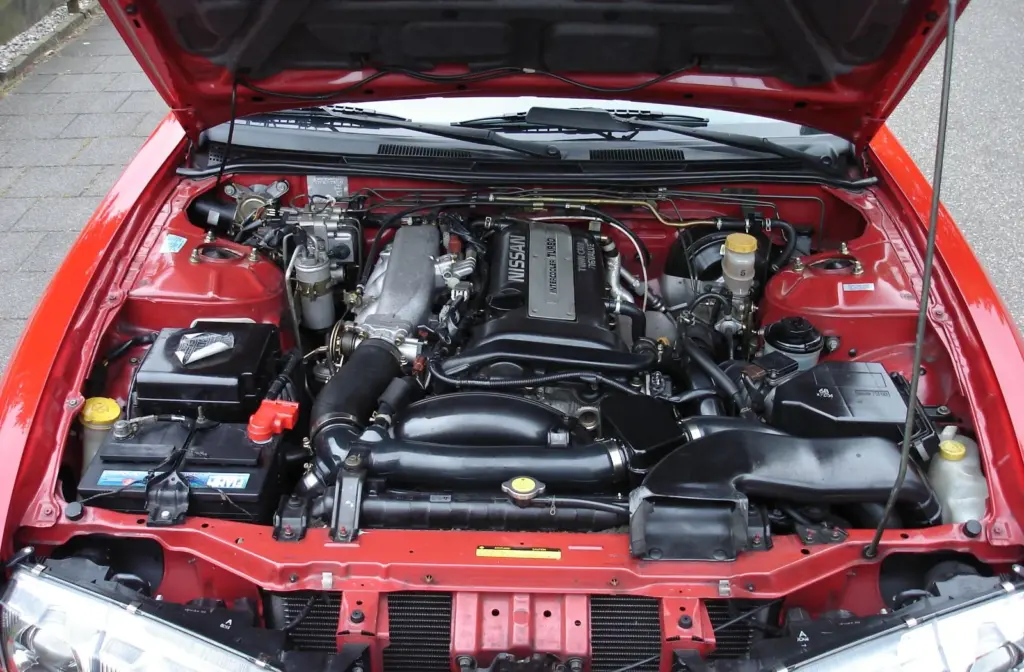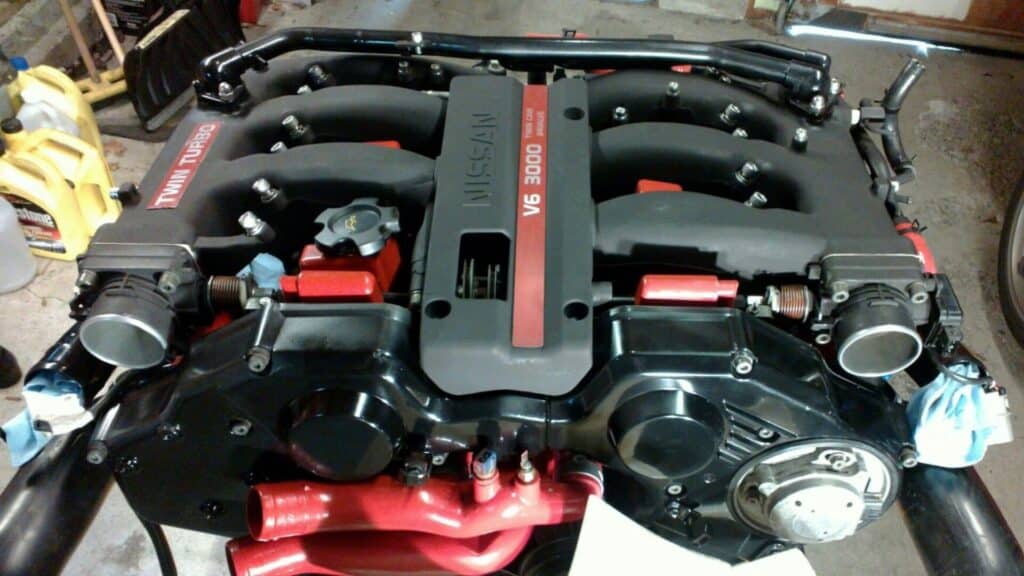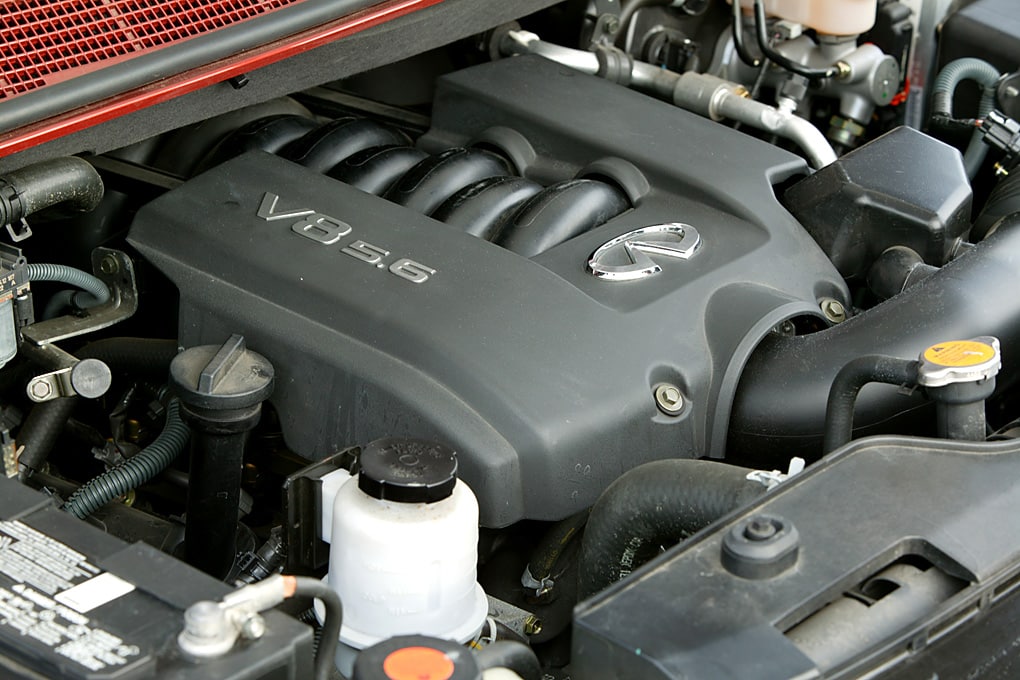The KA24DE is an iconic 2.4-liter inline four-cylinder engine, celebrated for its substantial displacement and robust design. It’s engineered to offer a perfect blend of energy and endurance. It features a dual overhead cam (DOHC) layout that enables precise valve timing and a sequential multi-port fuel injection system ensuring efficiency and power. This engine has been a staple in Nissan’s lineup, boasting a respectable output that makes it a preferred choice for both daily commuting and spirited driving.
Within Nissan’s diverse engine portfolio, the KA24DE stands out as a testament to the brand’s commitment to reliability and performance. It has been the backbone of various models, providing a dependable power source that delivers consistent performance. Its versatility is demonstrated in its ability to adapt from sedate family sedans to the more demanding realms of motorsports, showcasing Nissan’s engineering adaptability.
First introduced in the early 1990s, the KA24DE was initially designed to power SUVs and trucks, focusing on torque and durability.
However, its potential was quickly recognized, and it was soon adopted into the engine bays of a wider range of models, including the legendary 240SX, renowned for its drift capabilities, and the rugged Xterra, proving that it could handle both the smooth asphalt and the rough, untamed paths less traveled.
The breakdown of the engine code is as follows:
- KA – Engine Family
- 24 – 2.4 Liter Displacement
- D – DOHC (dual overhead camshafts)
- E – Multi-Point Fuel Injection
Read Also: Basic car maintenance for beginners
Nissan KA24DE Engine: An Overview
The Nissan KA24DE engine, a marvel of automotive prowess, marked its debut amidst the technological renaissance of the early 1990s. Crafted with a vision to deliver power and durability, the KA24DE emerged as a powerhouse, distinguishing itself with a 2.4-liter capacity and dual overhead cam design. This engine’s architecture signaled Nissan’s innovative leap, favoring a four-cylinder configuration that promised both vigor and efficiency—a departure from the era’s trend of bulkier engines.
Throughout its development, the KA24DE was fine-tuned to serve an array of vehicles, each iteration honing its capacity to blend seamlessly with the distinct demands of various models. This adaptability made it a mainstay in Nissan’s lineup, demonstrating the company’s strategic engineering and forward-thinking approach.
The role of the KA24DE in Nissan’s vehicle performance cannot be overstated. Its application extended beyond mere utility, elevating models like the iconic 240SX to cult status among drift enthusiasts and transforming the Xterra and Frontier into titans of terrain.
The KA24DE’s unique blend of responsiveness and resilience contributed significantly to the brand’s reputation for crafting vehicles that delivered consistent, reliable performance without sacrificing the joy of driving. It stands as a testament to Nissan’s legacy—a legacy of innovation that continues to influence modern engine design.
KA24DE Specs
The Nissan KA24DE engine has made a significant mark due to its robust construction and adaptability across various Nissan models. Here’s a detailed table of its specifications:
| Specification | Detail |
|---|---|
| Engine Type | Inline 4-cylinder DOHC |
| Configuration | Longitudinal / Transverse |
| Displacement | 2,389 cc |
| Dimensions | Width: 690 mm, Height: 615 mm, Length: 960 mm |
| Compression Ratio | 9.5:1 (Varies with model year and application) |
| Power Output | 155 hp @ 5,600 rpm |
| Torque | 160 lb-ft @ 4,400 rpm |
The KA24DE engine is characterized by its inline 4-cylinder configuration with a dual overhead camshaft (DOHC), contributing to its smooth operation and consistent power delivery. The displacement of 2,389 cubic centimeters (cc) is relatively large for a four-cylinder engine of its era, which is reflected in its generous torque figures.
Regarding dimensions, the engine’s compact design facilitated its installation in various chassis, allowing both longitudinal and transverse mountings. These dimensions also played a role in the engine’s widespread use across the Nissan range.
A notable feature of the KA24DE is its compression ratio of 9.5:1, although this ratio did vary slightly depending on the model year and the specific vehicle application. This ratio balances performance and fuel efficiency, making it suitable for spirited driving and everyday use.
Regarding output, the KA24DE is quite capable, producing 155 horsepower at 5,600 rpm. A torque figure of 160 pound-feet complements this power at 4,400 rpm, which provides a solid mid-range punch that drivers appreciate for both city driving and highway cruising.
What Cars Have A KA24DE Engine?
- 2000-2004 Nissan Xterra
- 1998-2008 Nissan Navara/Frontier (D22)
- 1991-1998 Nissan 240SX
- 1997-2000 Nissan R’nessa (4WD model, Japan)
- 1998-2001 Nissan Presage U30 (Japan)
- 1999-2001 Nissan Bassara U30 (Japan)
- 1993-1997 Nissan Bluebird U13
- Isuzu COMO (Japanese: Isuzu COMO)
- Nissan Largo
KA24DE Camshaft Torque Specs
Evenly tighten 1/2 turn at a time on each bolt until all of the caps are snug (1.4 ft-lb and again to 4.3 ft-lb). Then, the final torque of the bolts from the center bolts outward to 6.7 to 8.7 ft-lb. Always use a 26 m.m. or 1” wrench on the cam hex to back up your torque wrench (never use the chain for resistance)! Torque the cam sprocket bolts to 123 to 130 ft-lb. More info is at the source.
The Engineering Behind KA24DE: Engine Firing Order
The firing order of an engine is a foundational element that dictates the sequence in which the engine’s cylinders ignite, playing a critical role in balancing power delivery and minimizing vibrations. For the KA24DE engine, the precision of its firing order is paramount in achieving the smooth operation and longevity that the engine is known for.
The science behind an engine’s firing order is rooted in harmonics and mechanical balance principles. By carefully determining the sequence, engineers can ensure that the engine runs smoothly, with minimal stress on the crankshaft and other components. The aim is to distribute power evenly and keep the engine in a state of equilibrium during operation.
The KA24DE engine operates with a firing order of 1-3-4-2. This sequence is carefully engineered to optimize the engine’s balance and performance. With the number one cylinder firing first, it is followed by the third, which is diagonally opposite in the engine’s layout, helping to maintain an even distribution of force.
This is then followed by the fourth and second cylinders, respectively. This particular order helps reduce engine vibrations, ensure a smoother ride, and provide a more uniform torque spread across the power band, enhancing the overall driving experience.
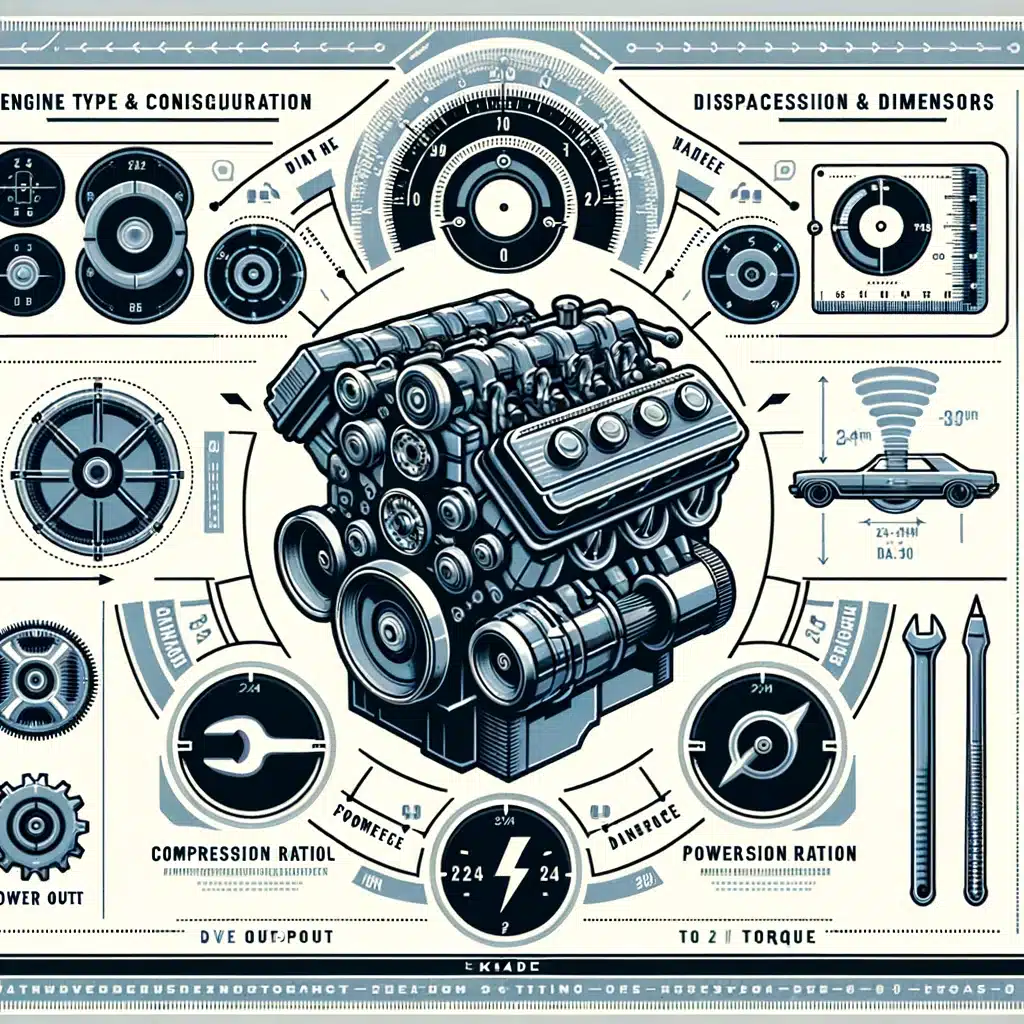
Oil Essentials: Capacity and Type for KA24DE
Maintaining the lifeblood of the Nissan KA24DE engine involves using the right oil to ensure its smooth operation and longevity. The choice of oil and adherence to service intervals are paramount for optimal performance. Below is a table detailing the recommended oil specifications and maintenance intervals for the KA24DE:
| Oil Specification | Detail |
|---|---|
| Recommended Oil Type | 10W-30 API SG or SH; ILSAC multigrade engine oil |
| Oil Capacity | 3.5 quarts (3.3 liters) with filter change |
| Change Intervals | Every 3,000 miles (4,800 km) or every 3 months |
Nissan recommends using a 10W-30 grade oil, compliant with API SG or SH standards, to provide the ideal viscosity and protection for the KA24DE across various temperature ranges. The engine oil should also meet ILSAC standards for multigrade oils, ensuring it provides the necessary lubrication without sacrificing fuel economy.
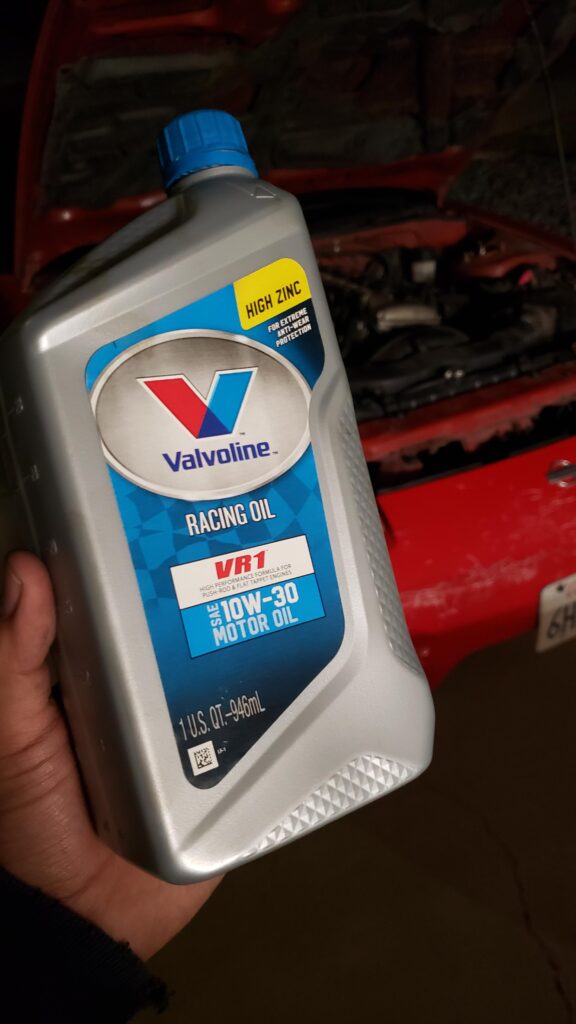
With a capacity of 3.5 quarts, including the filter, the KA24DE doesn’t require excessive amounts of oil, making economical and environmentally friendly changes. Adhering to a regular change interval of every 3,000 miles or 3 months, whichever comes first, is crucial.
This ensures that the oil maintains its protective and lubricating properties, preventing sludge buildup and excessive wear on engine components.
KA24DE Timing System: Belt or Chain?
The Nissan KA24DE engine utilizes a timing chain rather than a belt. This choice reflects Nissan’s commitment to durability and longevity. Timing chains are generally more robust than belts and are designed to last the engine’s life without needing regular replacement.
The KA24DE’s timing chain is critical, ensuring that the camshafts are synchronized with the crankshaft. This synchronization is essential for precise valve timing, directly influencing engine performance and efficiency. The chain-driven mechanism of the KA24DE is favored for its ability to handle the engine’s demands without the periodic maintenance that timing belts require.

However, even though timing chains are built to be durable, they are not immune to wear and tear. It’s important to listen for any unusual noises, such as rattling or clunking from the front of the engine, which could indicate a stretched or worn chain. Regular oil changes are also crucial, as clean oil is essential for keeping the timing chain lubricated and functioning properly.
While the KA24DE’s timing chain system is designed to be maintenance-free, it should still be inspected periodically, especially when servicing other nearby components. If you’re experiencing issues or your engine is approaching high mileage, it’s wise to have a professional check the chain and its associated sprockets, tensioners, and guides. Keeping these components in good working order is key to maintaining the engine’s timing, precision, and overall health.
Interference Status: Does KA24DE Have an Interference Engine?
In the realm of automotive engines, the distinction between interference and non-interference engines is pivotal in understanding how an engine handles the synchronization of its internal components.
- Interference Engines:
- Valves extend into the combustion chamber far enough that if the timing belt or chain fails, they can collide with the pistons.
- This design can lead to better compression and performance but carries the risk of severe engine damage if the timing mechanism fails.
- Non-Interference Engines:
- It is designed with enough clearance between the valves and pistons that if the timing belt or chain fails, they do not collide.
- This design may slightly compromise performance but provides a significant reliability benefit by preventing catastrophic engine damage from a timing failure.
The Nissan KA24DE engine proudly falls into the category of interference engines. Here’s what it means for this particular engine:
| KA24DE Engine Characteristic | Detail |
|---|---|
| Interference Status | Interference |
| Benefits | High risk of major engine damage due to timing failure |
Fuel Economy Insights: KA24DE MPG Ratings
The Nissan KA24DE engine, while known for its durability and power, also offers respectable fuel economy, which can be an important consideration for drivers who are mindful of fuel consumption and costs.
Below is a table summarizing the average fuel consumption statistics for vehicles equipped with the KA24DE engine:
| Vehicle Model | City MPG | Highway MPG | Combined MPG |
|---|---|---|---|
| Nissan 240SX | 21 | 28 | 24 |
| Nissan Frontier | 17 | 22 | 19 |
| Nissan Xterra | 16 | 20 | 18 |
These figures are averages and can vary based on driving conditions, maintenance, and vehicle conditions. Despite its age, the KA24DE can still be quite economical with the right driving habits and care.
To further improve fuel efficiency, consider the following tips:
- Regular Maintenance: Keep up with regular maintenance schedules, including oil changes, air filter replacements, and spark plug inspections.
- Tire Pressure: Ensure tires are inflated to the manufacturer’s recommended levels to reduce rolling resistance.
- Gentle Acceleration: Accelerate smoothly and avoid unnecessary hard acceleration.
- Speed Regulation: Maintain a steady highway speed and use cruise control when appropriate.
- Weight Reduction: Remove unnecessary weight from the vehicle to decrease the workload on the engine.
- Use of Recommended Fuel: Stick to the manufacturer’s recommended fuel type for optimal engine performance.
By incorporating these practices, drivers can maximize the KA24DE’s fuel economy, making the most of each gallon and ensuring a cost-effective and environmentally friendly driving experience.
Spark Plugs and Gap Settings for KA24DE
For the Nissan KA24DE engine, the choice of spark plugs and their proper maintenance is crucial for maintaining its performance and fuel efficiency. The recommended spark plugs for this engine are typically platinum or iridium, which provide durability and a consistent spark.
Here are the specifications for spark plugs suited to the KA24DE engine:
- Recommended Spark Plugs:
- NGK Platinum (for standard performance)
- NGK Iridium IX (for enhanced performance and longevity)
- Gap Settings:
- The ideal spark plug gap for the KA24DE is 0.044 inches (1.1 mm).
- Replacement Intervals:
- Platinum spark plugs: Replace every 60,000 to 100,000 miles
- Iridium spark plugs: Replace every 100,000 miles
It’s important to adhere to these gap settings as they ensure that the spark plug can deliver the optimal spark for combustion. An incorrect gap may lead to engine misfire, reduced fuel economy, and a lack of power.
Regular inspection of the spark plugs can reveal the engine’s condition. The insulator and electrodes’ brownish or light gray color typically indicates good engine performance and correct operating temperatures. If you notice heavy deposits, oil on the plugs, or physical damage, it’s time to replace them sooner than the recommended intervals.
Keeping to these specifications and intervals will help the KA24DE engine maintain its reliability and efficiency throughout its lifespan.
Horsepower Highlights
The Nissan KA24DE engine, a workhorse in its own right, is renowned for delivering a robust performance across various models. With a naturally aspirated design, it provides a horsepower output that is reliable and capable of meeting the demands of everyday driving and spirited driving sessions.
Here’s a glance at the horsepower ratings for different models equipped with the KA24DE engine:
- Nissan 240SX: Approximately 155 hp @ 5,600 rpm
- Nissan Altima (U13 and L30 models): Approximately 150-155 hp @ 5,600 rpm
- Nissan Frontier: Around 143 hp @ 5,200 rpm
- Nissan Xterra: About 143 hp @ 5,200 rpm
These figures illustrate the engine’s versatility and how it was tuned to suit the character of each vehicle, from the sporty 240SX to the rugged Frontier and Xterra.
To optimize the performance of the KA24DE, enthusiasts can undertake various modifications. These include:
- Intake and Exhaust Upgrades: Installing a cold air intake system and a high-flow exhaust can improve breathing and increase power.
- Engine Tuning: Re-calibrating the ECU can optimize the air/fuel mixture for better performance.
- Ignition System: Upgrading to high-performance spark plugs and ignition wires can provide a stronger spark, improving combustion efficiency.
- Regular Maintenance: Keeping the engine well-maintained is key. This includes timely oil changes, air filter replacements, and ensuring the timing chain is in good condition.
Engine Coolant Specifications
The cooling system of the Nissan KA24DE engine is integral to its operation, ensuring that the engine maintains an optimal temperature and prevents overheating. The type of coolant used in the system and adherence to proper maintenance schedules are critical for the engine’s health and efficiency.
Here’s what you need to know about the coolant specifications for the KA24DE:
- Suitable Coolant Types:
- Ethylene glycol-based coolant for aluminum engines
- Nissan Long Life Antifreeze/Coolant or equivalent
- Coolant Capacity:
- Approximately 2.4 to 2.9 gallons (9.1 to 11 liters), depending on the vehicle model and cooling system configuration.
- Change Recommendations:
- Initial change at 60,000 miles (96,560 kilometers), then every 30,000 miles (48,280 kilometers) thereafter
- Inspection of the coolant condition should be part of regular maintenance checks, with top-ups as necessary.
Using the correct type of coolant is essential for preventing corrosion and deposits that can clog the cooling system and reduce its efficiency. The Nissan KA24DE engine benefits from using a premium ethylene glycol-based coolant that’s compatible with aluminum engines, which helps maintain the integrity of the engine’s internal passages.
Regular coolant changes are as vital as using the right type. Old coolant can become acidic over time, which can damage the engine. Following the recommended intervals for coolant replacement ensures that the cooling system remains clean, efficient, and effective at keeping the engine at the proper operating temperature.
Common Issues and Solutions: Nissan KA24DE Engine Problems
The Nissan KA24DE engine is known for its robustness and reliability, but like any mechanical component, it does have its set of common issues that owners may encounter throughout its life. Understanding these issues and their solutions can greatly extend the engine’s life and improve vehicle performance.
Here’s a breakdown of known issues with the KA24DE engine, along with troubleshooting tips and solutions:
| Common Issue | Symptoms | Potential Solution |
|---|---|---|
| Oil Leaks | Oil spots under the vehicle, burnt oil smell | Replace worn seals/gaskets, tighten bolts |
| Timing Chain Noise | A rattling sound from engine front | Inspect tensioner, guides; may require replacement |
| Idle Irregularities | Fluctuating or rough idle | Clean or replace the idle air control valve |
| Exhaust Valve Recession | Misfire, loss of power | Valve adjustment, or head service |
| Intake Manifold Gasket Leak | Rough idle, vacuum leaks | Replace intake manifold gasket |
| Knock Sensor Failure | Poor performance, check engine light | Replace knock sensor |
- Oil Leaks: Common in higher mileage engines due to seal and gasket wear. Regular inspection and timely replacement can prevent larger issues.
- Timing Chain Noise: Often caused by worn tensioners or guides. Early detection and replacement can avoid more significant damage.
- Idle Irregularities: Usually linked to a dirty or failing idle air control valve. Maintaining cleanliness and function is key.
- Exhaust Valve Recession: Can lead to significant issues if not addressed. Requires adjustment or more in-depth engine work.
- Intake Manifold Gasket Leak: Can cause various idle and performance issues. Replacement of the gasket is the usual fix.
- Knock Sensor Failure: This affects the engine’s performance due to improper ignition timing. Sensor replacement is necessary.
Regular maintenance and prompt attention to these common issues can help KA24DE owners keep their engines running smoothly. It’s always recommended to consult with a professional mechanic for accurate diagnosis and proper repair to ensure the engine’s longevity.
Durability and Longevity: Engine Reliability
The Nissan KA24DE engine, a staple of reliability in the automotive world, boasts a solid reputation for durability and longevity. With proper care and regular maintenance, this engine has been known to exceed 200,000 miles without major mechanical issues, attesting to its well-engineered design and robust construction.
Lifespan Expectations of the KA24DE
- Average Lifespan: With diligent maintenance, the KA24DE can reliably serve beyond the 200,000-mile mark.
- Recorded Instances: Some owners report mileages surpassing 300,000 miles, highlighting the engine’s potential for endurance.
Factors That Affect Engine Reliability
- Maintenance Schedule: Adherence to regular oil changes, timing chain inspections, and coolant flushes is critical.
- Driving Habits: Gentle acceleration and avoiding over-revving can extend engine life.
- Quality of Parts: Using OEM or high-quality aftermarket parts, especially for vital components like timing chains and water pumps, ensures reliability.
- Operating Environment: Engines that operate in less extreme climates and avoid frequent short trips tend to last longer.
- Timely Repairs: Addressing small issues before they escalate can prevent extensive damage to the engine.
The KA24DE’s reliability is not accidental but a result of thoughtful engineering. Its timing chain, as opposed to a belt, requires less frequent service, and the engine’s overall design simplicity means fewer components could fail. Its cast iron block provides robustness, while the aluminum head helps to keep it light and thermally efficient.
Real-world longevity is also a testament to the quality of the materials used in the KA24DE. Each component is built to withstand the rigors of daily use, from its pistons to its valves. This endurance, however, is contingent on regular maintenance. Regular oil changes, for instance, ensure that all moving parts are well-lubricated, minimizing wear and tear.
Ultimately, the KA24DE’s reliability is a significant reason why it’s held in high regard by automotive enthusiasts and daily drivers alike. With a track record of dependability, it continues to be a sought-after engine for its performance and endurance.
Enhancements and Modifications: Upgrading Your KA24DE
For enthusiasts looking to extract more power from the Nissan KA24DE engine, numerous enhancements and modifications can unlock its potential. However, it’s crucial to consider the legal and warranty implications of these upgrades.
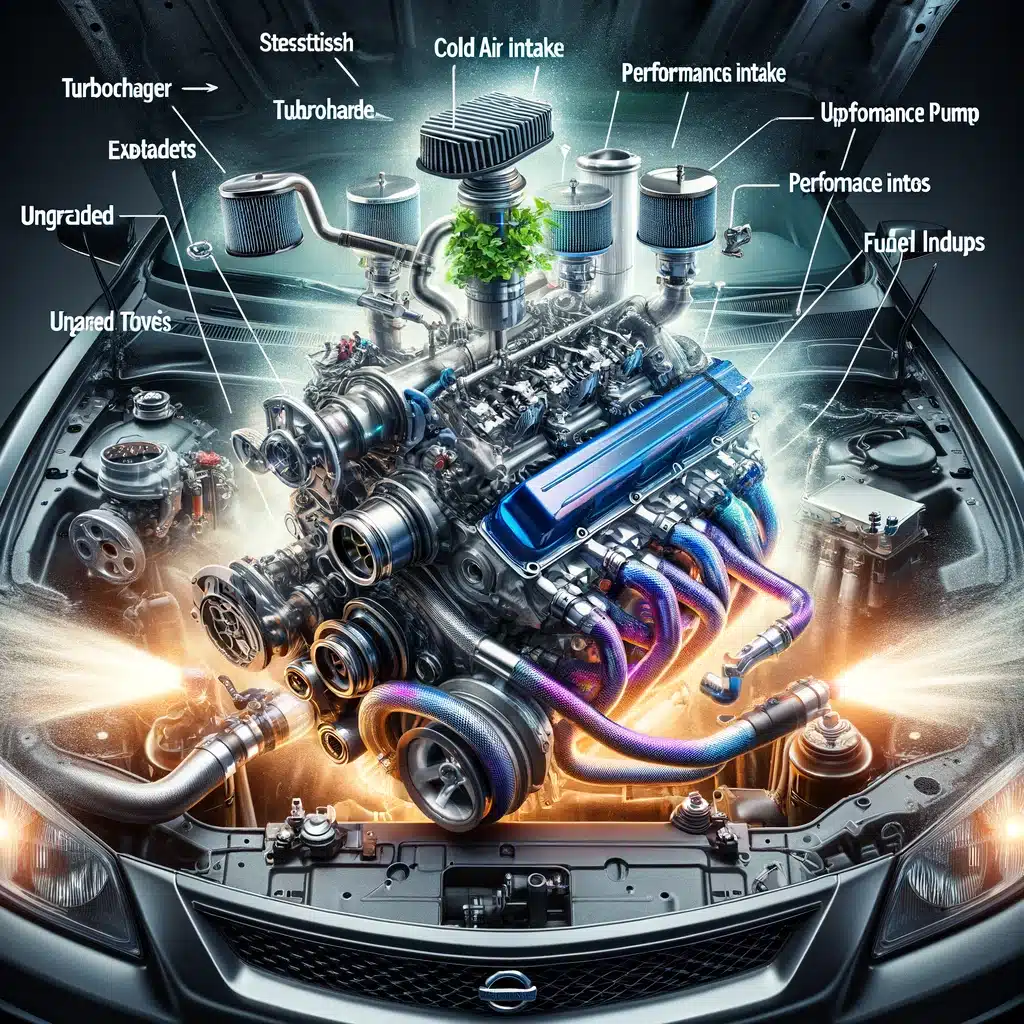
Popular Performance Upgrades:
- Induction and Exhaust:
- Cold Air Intake Systems: Improve airflow to the engine.
- Performance Exhausts: Enhance exhaust flow and reduce backpressure.
- Forced Induction:
- Turbochargers: Significantly increase power output.
- Superchargers: Offer a linear power increase and immediate throttle response.
- Fuel System:
- Upgraded Injectors: Provide more fuel for increased power.
- High-Flow Fuel Pumps: Ensure consistent fuel delivery at higher power levels.
- Engine Management:
- ECU Tuning: Optimize fuel and ignition maps for performance gains.
- Standalone Engine Management: Allows for custom tuning and control.
- Internal Engine:
- Forged Pistons and Rods: Enhance the strength of the engine internals.
- Performance Camshafts: Increase valve lift and duration for better breathing.
Legal Considerations and Warranty Implications:
- Emission Regulations: Ensure that modifications comply with local emission laws to avoid fines or legal issues.
- Noise Ordinances: Be mindful of exhaust volume and local noise regulations.
- Insurance: Declare modifications to your insurer; failure to do so may invalidate your policy.
- Warranty: Factory warranties may be voided by modifications, so consider the implications if your vehicle is still under warranty.
By carefully selecting and installing performance upgrades, you can enhance the KA24DE’s output while maintaining its inherent reliability. Always use high-quality parts and professional installation to ensure the best results.
Remember to keep legal requirements in mind, as certain modifications can affect the road legality of your vehicle. It’s wise to consult with automotive legal experts and warranty providers before proceeding with significant changes to your engine.
FAQs
- What is the best oil for a KA24DE engine?
- The ideal oil for a KA24DE engine is a high-quality 10W-30 API SG or SH rating oil. During colder temperatures, a 5W-30 grade may be used to ensure proper lubrication on startup.
- How often should the timing chain be replaced?
- Unlike timing belts, the timing chain in a KA24DE engine is designed to last the life of the engine. However, it should be inspected for wear or damage every 100,000 miles or if you notice symptoms like engine rattling or irregular idling.
- Can the KA24DE engine run on premium fuel?
- The KA24DE engine is designed to run efficiently on regular unleaded fuel. Using premium fuel won’t harm the engine but it will not significantly improve performance to justify the extra cost over regular fuel.
- What are the signs of spark plug issues in the KA24DE?
- Common signs include difficulty starting the engine, misfiring, engine surging, high fuel consumption, and lack of acceleration. If you experience any of these issues, inspecting or replacing the spark plugs is a good starting point.
The Enduring Legacy of the KA24DE Engine
The KA24DE’s reliability, ease of maintenance, and surprising versatility have cemented its place as one of the most respected engines in Nissan’s storied lineage. It powered a range of vehicles from sporty coupes to rugged SUVs with equal aplomb, earning the admiration of enthusiasts and the trust of daily drivers alike.
The engine’s ability to clock high mileages with basic care speaks volumes about its design and the engineering philosophies of its time. The KA24DE remains a favorite among tuners and builders, a testament to its enduring appeal and the robust platform it provides for modifications.
Its role in propelling the famous 240SX into drift culture lore, and its service in reliable daily commuters ensures that the KA24DE will be remembered not just for its specs, but for the experiences it enabled and the communities it fostered.
For those hungry for more knowledge on the KA24DE, or for hands-on enthusiasts seeking to delve deeper into the engine’s potential, the following resources can be invaluable:
- Nissan Factory Service Manuals: The definitive guide for service and repair procedures.
- Online Forums: Communities like NicoClub and ClubFrontier where fellow KA24DE aficionados share knowledge.
- Performance Tuning Guides: Books and articles that cover the specifics of engine tuning for performance gains.
- YouTube Channels: Visual guides and walkthroughs for repairs, maintenance, and upgrades.
- Aftermarket Parts Suppliers: Catalogs for performance parts specific to the KA24DE.


